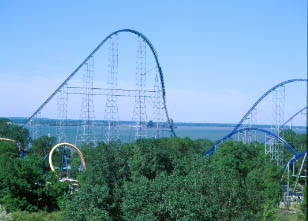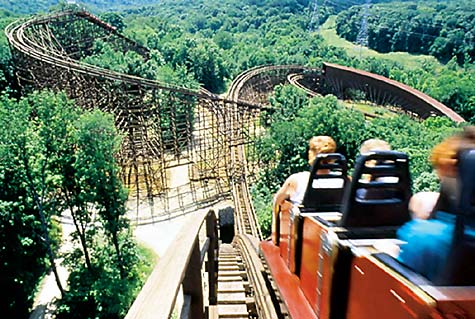



 |
|||||||
| Roller coasters are built principally on the laws of physics. A roller coaster designer uses the lift hill of the ride to create potential energy (Harris). This is transformed into kinetic energy (energy of motion) as the car travels down the first hill. The designer must deal with friction and drag slowing down the car, so the second hill must be shorter than the first. G-forces act on the riders as the ride progresses. Negative g's on at the tops of hills are maximized for greater thrills, while positive g's on the bottom are minimized for comfort. Curves are banked up to 90 degrees to reduce lateral g-forces. If a designer fails to consider any of these principals, the roller coaster will be painful, boring, or get stuck somewhere on the track. |  |
||||||
 |
|||||||
 |
|||||||
|
|
|||||||